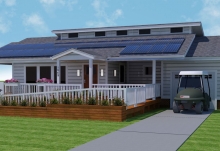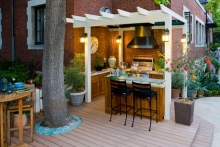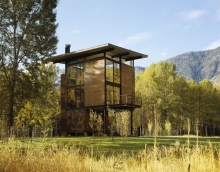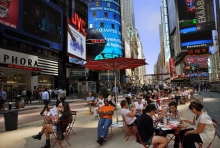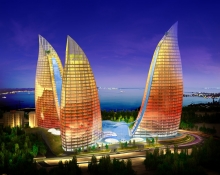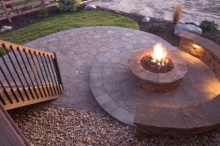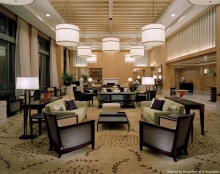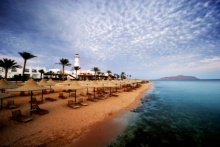Looking at INhome, short for "Indiana home," one wouldn’t assume that it is net zero or even necessarily green, if not for the solar panels mounted on its roof. It looks like a quintessential Midwestern home, and that is exactly what Purdue University students intended for their 2011 Solar Decathlon entry. Sarah Miller, the team’s Architecture and Design Manager, describes the look as “transitional style,” falling somewhere between modern and traditional. With an estimated cost of less than $250,000, INhome’s practical design will appeal not only to the Midwestern homebuyer, but also a national market.
Talking About Outdoor Kitchens
The trends sweeping the American architectural front include a great shift to the outdoors. Among outdoor living spaces, the one idea that has gained incredible popularity is the outdoor kitchen. With sweltering heat waves oppressing the nation, Americans want to perform their cooktop operations alongside their grilling in the great wide open. With the housing market still in decline, homeowners are also looking for ways to increase property values and stay content with staying put. We talked with interior designer Joshua Ingraham of Joshua Ingraham Design, who offered some of his best advice for effectively and efficiently incorporating an outdoor kitchen into your home.
Ecotourism at Lapa Rios: Costa Rica's Rainforest Ecolodge
Imagine a place that could take you away from the stress of demanding deadlines. Lapa Rios Rainforest Ecolodge can offer that very experience. Located on the Osa Peninsula on the southwestern end of Costa Rica, Lapa Rios sits on a private nature reserve of more than 900 acres and overlooks the Golfo Dulce. This eco-tourism destination has garnered international attention and has won awards from several prominent publications such as National Geographic Traveler and Condé Nast Traveler. Multiple times it has won the Certification for Sustainable Tourism's (CST) Five Leaf Award – Costa Rica’s highest honor. Lapa Rios Rainforest Ecolodge marries the efforts of the resort, guests, and locals to promote sustainability and environmental awareness.
House of the Month: The Versatile Delta Shelter
The Delta Shelter, by Olson Kundig Architects, rises above its site on stilts. When unoccupied, it is shuttered against the elements and reduced to its simplest form: a metal box. In concept, it is not so different from the timber observation towers that are scattered throughout the North American wilderness and used for the purpose of hunting or habitat viewing. In fact, the 1,000 sq. ft. Delta Shelter, like its vernacular counterparts, is a rural retreat situated on a remote site in the North Cascade Mountains of Mazama, Washington.
New York City Revitalizes the Life Between Buildings
(Thanks in part to Gehl Architects)
Over the past decade or so, New York City has been making dramatic improvements that emphasize the quality of life on the street, urban vitality, and sustainability. This is a most welcome shift that is part of a most welcome sea change. Specifically, the city has been carving out more spaces for pedestrians, bicycles, public transit, public gathering, and parks. New York City has no lack of pedestrians, and these improvements invite more. Planting a million trees and creating 200 miles of bike lanes are certainly New York City-sized moves. Like many cities, New York City is correcting the problems created by modernist planning and the predominance of the automobile, including damage to ordinary life for people on the street, where valuable urban vitality was traded for more lanes of traffic and parking lots.
The Controversy Surrounding Hydraulic Fracturing
The Marcellus Shale, a subterranean rock formation that extends to 10 eastern and Appalachian states as well as Canada, may well become the proving ground for hydraulic fracturing, an increasingly controversial method of drilling for natural gas, with Pennsylvania currently the flashpoint of this controversy.
Reigniting Baku: HOK's Flame Towers
Boundary-stretching architecture is helping the once oppressed city of Baku, Azerbaijan, reinvent itself. DIA Holding has several major building projects underway; in addition to the high-profile Heydar Aliyev Cultural Centre by Zaha Hadid Architects, the company is responsible for the Flame Towers project, designed by HOK.
How to Build an Outdoor Fire Pit
Building a fire pit in your backyard is a great weekend project that adds value and enjoyment to your home.
Earlier this year, the Perkins Eastman Research Collaborative completed a study on behalf of the AIA that highlighted shifts in the senior living industry. The team generated a report that encapsulates various “insights and innovations” regarding the evolution of senior housing.
Vacation Green: New Guidelines for Building in the Hospitality Industry
As the world is facing an energy and resource crisis, we are realizing more and more the importance of sustainability. This is especially true within the hospitality industry. Corey Enck of the U.S. Green Building Council (USGBC) recently stated in a press release that “In the United States alone, hotels represent more than five billion square-feet of space, nearly five million guest rooms, and close to $4 billion in annual energy use.” Due to the unique challenges hospitality projects can present, the Hospitality Adaptations Working Group was formed to create a sustainable design model that the industry could follow.
Community Gardens, Farm Co-ops, and Land Trusts
As our global urban population continues to swell, the growth of community gardens, urban agriculture, farming co-ops, and land trusts is rising as well. How will urban planners accommodate these needs and govern their operation?
Currently, the worldwide percentage of people living in urban areas exceeds 50%; in the United States, that number swells to more than 80%. City planners face increased demand from urban populations for places to collectively garden and farm.
From Start to Finish: The Importance of a Constructability Review
Design schedules always seem to be pressed for time, which is the result of two primary factors. The first factor is that owners always want to move their projects forward as quickly as possible, so they pressure design teams into abbreviated design schedules. The second factor contributing to compressed design schedules is much less obvious than the first. It is human nature. People of all professions have a tendency to procrastinate in their duties. This is why design teams routinely accelerate their pace in the final weeks of the design phase, as opposed to progressing at a constant pace from start to finish. In the end, issuance of incomplete design documents is the recurrent and regrettable result of these two unfortunate factors. (In fairness to design professionals, it should also be noted that human nature is a contributor to why the final weeks of construction always seem to be quite hectic as well.)
